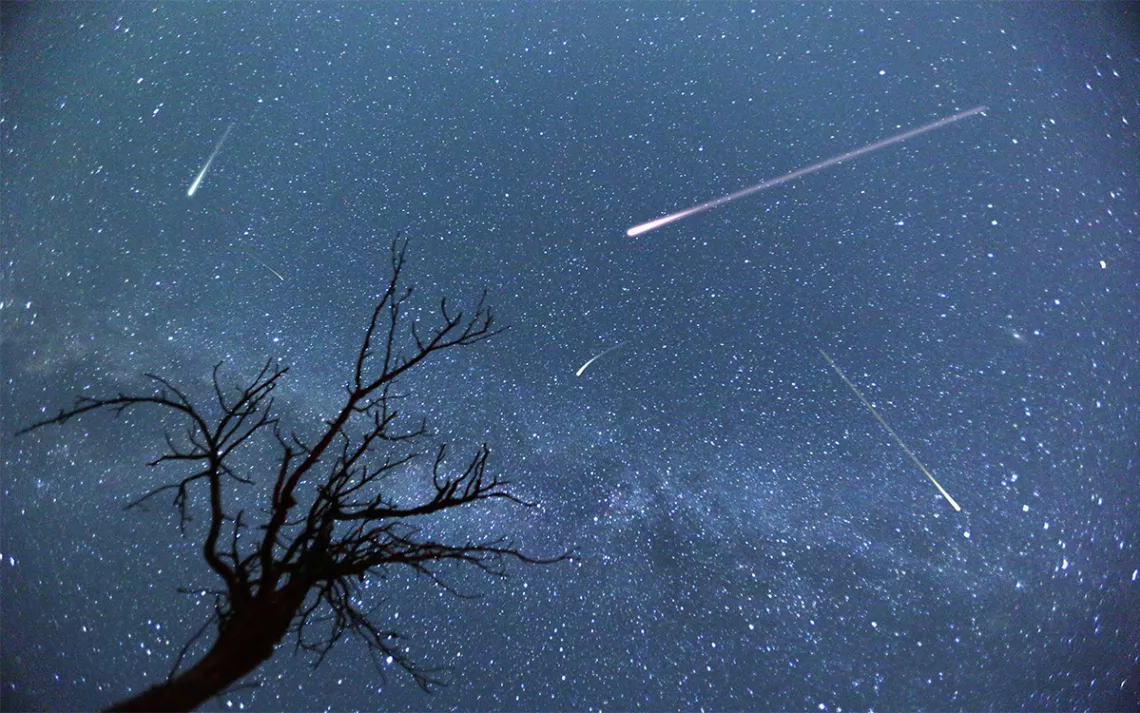December Astronomical Highlights: Dazzling Stars and Meteor Showers
Make the most of the darkness this month by keeping an eye to the sky

Photo by Cylonphoto/iStock
Darkness dominates over daylight with the solstice on December 21, but not for long. Winter will have just begun, but our days will ever so slowly get longer. The days around the winter solstice are the shortest of the year, but they are lengthening minute by minute, eventually restoring some sunlight to the evening sky. In the meantime, make the most of the darkness by keeping an eye on the stars.
Evening planets vanish from the sky in December. Saturn and Mercury sink toward the sun, but some observers may still be able to spot them just after dark close to the southwestern horizon during the first week of the month. The rest of us will have to get up early in the morning before the sun if we want to view our solar system neighbors.
Once the planets have abandoned the long, cold nights of December, the sparkling stars have the stage to themselves. A couple meteor showers and an occultation are highlights of the final month of 2017.
The Geminids are the first and most active meteor shower of December, peaking over the evening of the 13th to the 14th. Many meteor showers are at their best after midnight and in the early hours of the morning, but the Geminids can display up to 100 meteors an hour before midnight. Geminids are slow moving and long lasting compared to other meteors.
The second decent meteor shower of December is the Ursids, which peak over the 21st to 22nd. The rate of frequency is quite a bit lower than that of the Geminids, with five to 25 per hour, but if you’re looking up at the skies and see a streak of light, you probably saw an Ursid meteor.
If you’re out with little ones on Christmas Eve and they’re peering at the sky, looking for that red point of light that’s Rudolph’s nose, you can direct them to Betelgeuse, the reddish star at the shoulder of Orion. Betelgeuse is a red supergiant that has grown so large, it has probably swallowed any nearby planets. In fact, it may have already exploded, but because it’s 640 light-years away, we won’t know for some time.
Track the moon throughout December to find other interesting sky sights. On December 2, it will be near the Hyades star cluster in Taurus. The Hyades star cluster is shaped like the letter V and forms the head of the bull. The full moon occurs the next night, December 3, as it travels just above the head of Orion. The moon passes through Gemini and then slides by the Beehive Cluster of stars in Cancer on December 6. Late in the month, on December 30, the moon again moves through the Hyades cluster, but this time it passes right in front of Taurus’s brightest star, Aldebaran, in the early evening hours. The moon is 93 percent lit on this evening, and Aldebaran will first slip behind the narrow portion of the unlit moon before reemerging from behind the lit face.
The occultation will look different depending on your location. Observers in Chicago will see the whole event, beginning just after sunset while observers in southern Florida will see Aldebaran skim the edge of the moon instead of disappearing behind it. Those in San Francisco will miss the beginning of the occultation but will see the star reappear from under the moon after the moon has risen above the horizon.
 The Magazine of The Sierra Club
The Magazine of The Sierra Club



